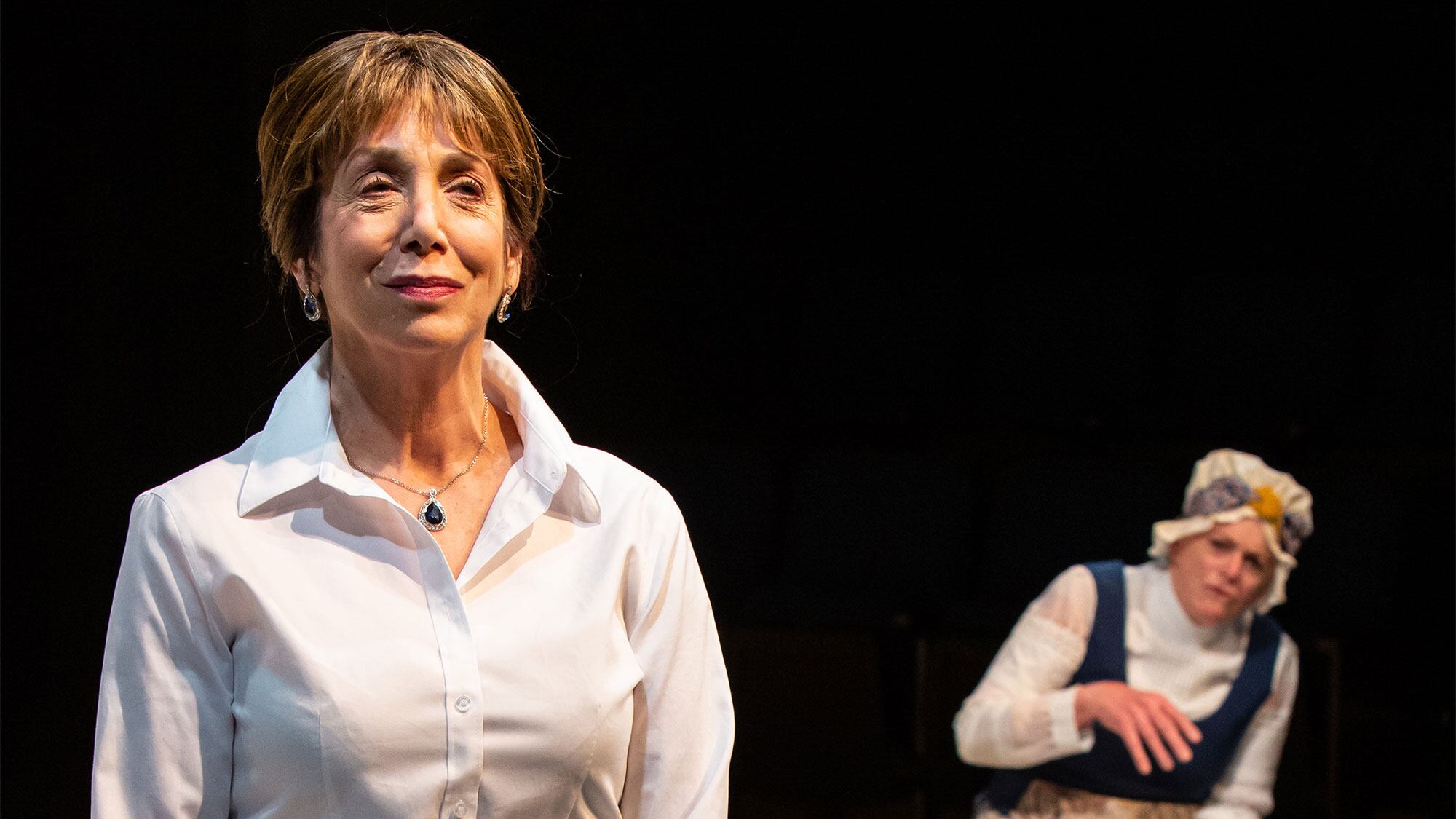By Christopher Gonzalez
When Nora Helmer walked out on her family at the end of Henrik Ibsen's A Doll's House, she stepped into a new life as an individual. But 15 years later, our unlikely heroine comes back. Now a major feminist author, she's returned home because, well, she needs something.
The tension between Nora's self-centeredness and her duty to family is at the heart of Lucas Hnath's A Doll's House, Part 2 playing at Artists Repertory Theatre. Nora now has to face the consequences of her liberating decision to abandon her husband and three children. That, ladies and gentleman, is a great idea for a play.
However, the idea is far better than the actual play.
The sequel to the late-19th-century classic all started with the title. Hnath wrote it down and laughed. But that, of course, is not where he stopped. The audacious script that sought to examine what happened to Nora after she slammed that door made its way to Broadway in 2017 and was nominated for eight Tonys. A Doll's House, Part 2 has also become the most produced play of the 2018-19 season.
With this staging, we learn Nora has returned to get Torvald to sign divorce papers to finalize their separation. But, bitter as ever, Torvald is determined to make the process difficult for his estranged wife. While certainly a commercial and critical success, further scrutiny of Artists Rep's production demonstrates flaws in Hnath's script. The biggest problem is that he tried to write a sequel that could stand on its own. That means valuable stage time is spent recapping points from Ibsen's play while at the same time setting up the plot for Part 2.
Line after line of characters reminding us what they need from other characters, as well as what will happen if they don't get it, can grow tiresome. Not unlike in the movie Inception, there's a lot of information overload in the form of characters saying things like, "Remember, I have to accomplish _____ because of ______, which, you'll remember, is super-important because if I don't, then _____."
Cringe-inducing exposition aside, the storyline can be horribly convoluted at times. So many important things occur offstage that are then explained by characters onstage, it's impossible to care about the action. Whatever happened to showing, not telling?
Hnath's decision to go with contemporary dialogue is a stylistic device that is attention-grabbing at first but quickly loses its charm. Lines overlap, characters interrupt, and it all calls attention to itself in a schticky manner. That being said, humor and conflict are deftly balanced in the script, which helps keep up the momentum.
Linda Alper, as Nora, had remarkable stamina. She didn't leave the stage once and maintained dynamic tension with her scene partners from beginning to end. However, she had a distracting tendency to broadcast whatever "intently listening" looks like, instead of listening to her fellow actors. By tilting her head in anticipation, squinting inquisitively, or raising her eyebrows, she overacted her silences. Alper's performance was also hindered by the set design—too much open stage space diffused her boundless energy.
The commercial success of this play can't be (cynically?) reduced to its title. Laurie Metcalf starred as Nora on Broadway, and Laurie Metcalf can make a piece of shit shine. Plus, people truly care about what happens to Nora Helmer. But most importantly, this play is bold and courageous. The world would be a better place if playwrights took risks like this more often.
SEE IT: A Doll's House, Part 2 is at Artists Repertory Theatre, 1515 SW Morrison St., artistsrep.org. 7:30 pm Wednesday-Friday, 2 and 7:30 pm Saturday-Sunday, Feb. 27-March 3. $30-$60.
